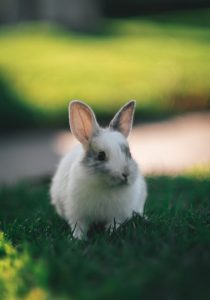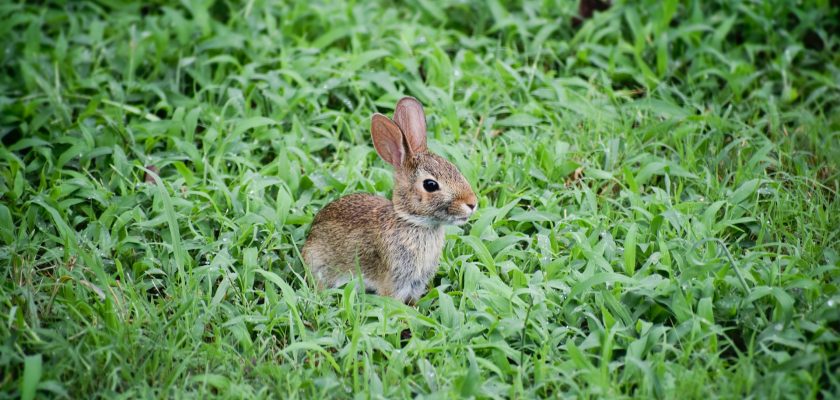When you are trying to determine how old a wild baby rabbit is, you need to take into consideration several factors. Some of these factors include whether the animal has been abandoned, if it has died, and if it is still in contact with its mother. You also need to consider how old the animal was when you found it.
Symptoms of an injured baby rabbit
If you find your baby rabbit limping or in shock, you need to take it to a veterinarian right away. The rabbit may be cold or dehydrated, and you don’t want to leave it alone to die.
A vet will look for signs of infection. Check for swelling, redness, and heat. They may also take radiographs. You will need to tell the vet what type of wound the rabbit has, as well as any previous trauma.
When you bring the rabbit in, make sure the environment is clean and quiet. Make sure the box is covered to prevent any exposure to the elements.
Rabbits with abscesses may require surgery to remove them. Abscesses are typically in the skin, but they can occur in bones as well.
The veterinarian will check the rabbit’s limbs for swelling, redness, and heat. The vet may also take an x-ray of the affected leg. This can indicate if the leg has fractured.

Photo by Jack Bulmer on Unsplash
Rabbits that have been attacked by a fox or dog should receive immediate veterinary care. The rabbit’s heart will beat rapidly and it may exhibit signs of shock. It should be placed in a warm, dark, newspaper-lined box.
After the rabbit has been checked by a vet, you may have to clean the area with antiseptic soap. Cover the wound with sterile gauze from the first aid kit. Use gentle pressure to stop the bleeding.
Depending on the severity of the injury, your veterinarian may prescribe antibiotics. He or she may use a local anesthetic, such as isoflurane gas, which is considered safe.
Some rabbits develop anorexia as a result of illness. This condition can lead to a decrease in appetite, and can be fatal. Therefore, you should keep the rabbit confined until it has recovered.
In addition, some animals die from liver failure or other causes. It is best to seek veterinary care before the disease progresses.
Once the rabbit has been properly treated, you should follow your vet’s instructions for keeping the rabbit comfortable and avoiding complications. Remember, though, to follow your instincts and don’t overreact to the animal’s behavior.
Signs a baby rabbit is dying
If you have a wild baby rabbit, you should know that they can die suddenly. Some may be killed in a sudden heart attack caused by fear. Others may die of ingesting a poisonous object.
If your rabbit suddenly stops eating, it could mean that he is dying. There are many reasons that rabbits stop eating, including GI stasis, dental issues, and pain.
A lack of appetite is common among newborn rabbits. They will also shiver when they are startled. Baby rabbits will start to chew on solid foods at around three weeks of age.
Rabbits who are not eating may be dehydrated. Dehydrated rabbits appear floppy, hunched over, and weak. The ears may be cold, the eyes watery, and the tongue blue.
Signs a wild baby rabbit is dying include changes in behavior. If your rabbit starts making strange noises, you should take it to a vet. These could indicate an underlying medical problem.
If your rabbit is not eating, you might want to check the litter tray. Look for droppings that are strung together with strands of hair. You can also try to syringe food or water into the rabbit’s mouth.
Changes in breathing can also signal that your rabbit is getting sick. Some rabbits have an unusually fast respiration rate when stressed. Other signs of difficulty breathing include sneezing, wheezing, and gasping.
Changes in fecal output are also a sign of illness. Loose fecals can be an indicator of gut stasis. This is one of the most obvious and significant signs a wild baby rabbit is dying.
Another obvious sign a rabbit is dying is when it appears to have passed out. Your rabbit may be choking on something, or might have a seizure.
Before your rabbit’s death, you need to deal with it as soon as possible. Keep the rabbit warm and give him tasty treats. It is also a good idea to offer him a light blanket.
Monitoring your rabbit’s condition will help you determine if it is time to take him to the veterinarian. By doing so, you will be ready for the worst.
Signs a baby rabbit has been abandoned
If you see a baby wild rabbit that looks abandoned, it’s best to take it to a wildlife rehabilitator to get it out of the wild. Many states prohibit care for animals like this without a licensed rehabilitator.
One of the easiest ways to find a newborn or orphaned bunny is to look for a nest. These animals often hide their nests in flower beds, but they can also be found in plain sight.
A nest is a structure built by a female rabbit to provide a warm and safe place for her babies. Typically, the nest is built using dried grasses and fur. You should check the nest carefully to see if there are babies inside.

Photo by Guillermo Casales on Unsplash
If you find a nest that has been disturbed, it should be rebuilt. The nest can be reconstructed by gathering up the original grasses and fur and rebuilding the structure.
In addition to the nest, there are other things to look for when determining whether a baby rabbit has been abandoned. A small, round shaped hole in the ground is a sign that the mother has moved the nest. Another sign is a grid pattern of yarn that indicates she is still caring for her youngsters.
Baby rabbits should be at least 5 inches in length to be considered old enough to be on their own. Smaller rabbits, particularly cottontails, are less likely to survive on their own.
A baby rabbit’s belly should be full of food. The tummy should be slightly rounded to indicate that the animal has been fed. This isn’t always the case. Babies that are too wet or have open wounds may require extra care.
When building a new nest, the old nesting material should be replaced with hay and dried grasses. Dried hay is better than wet grass clippings. It also helps to rub your hands in the soil to remove any human scent.
Aside from feeding, one of the easiest ways to tell if a baby rabbit has been abandoned is to see if it has open eyes. If it does, it’s an indicator that it is at least 10 days old.
Signs a baby rabbit has been reunited with its mother
If you find a baby rabbit in your yard, you may be wondering whether it is still with its mother. If so, there are some signs to look out for to help you know for sure.
First, check the nest. Often times, a baby rabbit will be left in its nest if the mother has not returned. Usually, the mother will be in the nest early in the day.
If the nest is intact, there are no reasons to worry. However, if there are babies that seem to be weak or have no fur, take them to a wildlife rehabilitator. Also, if you do not know how to care for a wild animal, you should not try to raise it yourself.
To find out if the mother is still caring for her youngsters, you can check the string or yarn that is around the nest. The string or yarn should be in a recognizable pattern. This is a sign that the mother is still feeding her young.
You should also make sure that the baby is warm. You can use a heating pad or a hot water bottle with a sock on top to keep the baby warm.
If the baby is not warm, it is time to take the rabbit to a wildlife rehabilitator. Wild rabbits are sensitive to stress. Stress can cause toxins to be released into the rabbit’s system, causing a serious illness called Septicemia. It is important to treat this condition as soon as possible.
Lastly, if you notice a loose cecal, the rabbit’s waste must be removed immediately. Loose cecals can be deadly to rabbits.
Baby rabbits are fragile and can easily be damaged if handled improperly. Make sure to check the infants regularly for health and development. In addition, don’t remove the baby from its nest, and leave the nest alone.
Finally, if you suspect that the baby rabbit is orphaned, it is important to take it to a rehabilitator. Otherwise, the rabbit will likely die. There are special formulas for wild animals. Human milk replacers can be dangerous to the wild animal, and the rehabilitator can help ensure the baby is healthy and able to return to the wild.
